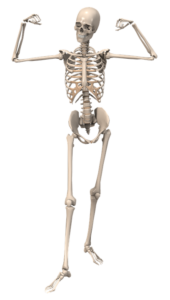Physical Activity: Taking Small Steps to Get Ahead of The Game
July 16, 2018
There is no question that physical activity is beneficial for our health. It has been well known for years that being active is good for us, physically and mentally. However, there are some things that you may still be wondering about. What exactly are the benefits? Why is it so good for us? And lastly, how can you implement exercise in a way that is effective in your busy life?



The Benefits
One of the most valuable traits of physical activity is the ability to prevent disease. Exercise can help the body reduce the risk of developing chronic diseases such as diabetes, cancer, osteoporosis and varieties of heart disease; and also reduce risk of complications of pre-existing diseases. When combined with adequate nutrition, physical activity has the ability to lengthen our life spans by many YEARS by preventing these diseases, which can lead to complications and mortality. The relationship between physical activity and risk of death is inversely linear, meaning that generally speaking: the more exercise, the lower the risk for death.
The Current Research
A review of current research (over 150 studies) on physical activity found the following to be true of preventing chronic disease:
- 50 percent reduction in risk of death from cardiovascular disease
- Decreased risk of developing type 2 diabetes by six percent for each increase of 500 calories burned per week
- 30-40 percent reduction in colon cancer risk
- 20-30 percent reduction in breast cancer risk
- Increased bone mineral density
- Reversion or prevention of one percent of bone loss per year in women
- Reduction in incidence of bone fracture[i]
Never Too Late
In even better news, not only does physical activity have the ability to reduce our risk of developing diseases, but also has the ability to reduce the risk of complications and death when these diseases are already present.The same review reported the following information:
- Activity totaling 1600 calories of activity per week halted progression of coronary artery disease
- Activity totaling 2200 calories per week reduced plaque accumulation in patients with heart disease
- Walking two hours per week associated with 39-54 percent reduced risk of cardiovascular related death in those with diabetes
- Decreased rate of bone loss in osteopenic women

The Science
Why is physical activity SO good for our bodies? Here is some of the physiology behind what goes on in our bodies during increased exercise:
When a person is burning more calories (through activity) than they are taking in (through food), the body begins to use its stores of energy (fat.) This results in weight loss, which is immensely helpful for our health because number one, obesity itself is an independent risk factor for a variety of diseases; and number two: having adipose (fat) located in our abdominal region causes inflammation and cardiovascular risk. The fat cells that are located in our central region secrete inflammatory proteins that can cause damage and result in some of the previously discussed conditions.[ii]
Additionally, as physical activity burns energy stored in fat, it also enhances cholesterol levels. Physical activity works to decrease triglycerides and “bad” cholesterol while promoting “good” cholesterol levels throughout the body – helping reduce risk of cardiovascular disease. Physical activity also decreases clotting activity in the blood and strengthens the cells that line our blood vessels – reducing risk of cardiovascular events.
Another huge impact of physical activity is improvement in blood sugar levels. Exercise increases specific protein and enzyme activity that regulate blood sugar levels and improve insulin sensitivity.
While exercising, the body is undergoing a bit of stress as we push it to work hard. This may cause a temporary increase in blood pressure, heart rate and inflammation. However, strengthening our bodies helps reduce all of these elements in the long term.
On another wavelength, physical activity is also well known for contributing to psychological well-being, more specifically in relation to reducing stress, anxiety and depression (which – SURPRISE – can reduce risk for cardiovascular disease). How does it work? There are a variety of hypotheses about why exercise has such a positive impact on mental health. One is the idea that such activity can be distracting – as it takes the mind off of undesirable things. One is a theory of self-efficacy- meaning that people take pride in being able to regularly conquer the feat of a challenging activity. Another is social interaction. The atmosphere around exercise can be a supportive and motivational environment.
On a more scientific level, there are theories about the body releasing monoamines and endorphins during and after exercise. It is theorized that monoamines released from exercise function similarly to ant depressive drugs, and that endorphins have inhibitory effects on the central nervous system that create calm feelings after exercising.
It is important to note that there is risk for unhealthy mental health behaviors surrounding exercise: including over exercise and obsession.[iii]

Types of Physical Activity:[iv]
Aerobic/endurance activity: increases heart rate and breathing; builds up capacity of muscles to work for extended periods of time; strengthens heart and lungs
- Running
- Swimming
- Walking
- Biking
- Dancing
- Jumping jacks
Resistance training: improves power and capacity of muscles
- Pushups
- Sit-ups
- Weight lifting
Bone strengthening: Feet, arms and legs support your body’s weight
- Running
- Walking
- Jumping rope
- lifting weights
Stretching: Improves flexibility and ability to move joints; enhances functionality
- Touching toes
- Yoga

How to Implement Exercise
The reasons most commonly reported for lack of exercise are a lack of time and energy. While I agree that it seems the older we get, the less time we have on our hands; we always have time for the things that mean the most to us. While physical activity shouldn’t take precedence over sleep, work, or time with loved ones – there is a way to fit activity into your daily life. It can even help you get better sleep, have more energy for the work day, and you can spend time with your loved ones in an active way.
I believe that part of the reason it is so hard to become motivated to exercise is that our culture has turned laziness into an ideal. We glorify watching Netflix and going to the movies, buy vacuums that don’t require human labor, and fantasize about sleeping in. Coming from a person that used to dread exercise, I know how hard it can be to get started. But I can also tell you as a person that now thrives on activity, the more physically fit you become, the more you will crave the endorphins of physical activity and the more you will love yourself. I agree with the fact that it is hard to get started, so I have some tips for you. First – start small! Add a couple of 10-minute walks to each day. Take a break from sitting at your desk to take a walk outside. Climb a flight of stairs to use the restroom on the floor above. Stretch for a couple of minutes in the morning, before bed, or while you’re cooking. Second, make your lifestyle more active. Park farther away at the store. Dance around your house as you do chores. Walk instead of drive when going places nearby. When you make these small changes and begin to feel more confident, take larger steps and continue to try new things. Join a gym with a friend! Take a yoga, zumba, or kickboxing class. Go for a bike ride with the family. The key to making it fun is to switch it up and make things interesting. Lastly, if you are someone that can’t fit a gym membership into your budget – I have great news for you. Our technology has made it so easy for us to access resources from our own homes. I recommend looking up at-home workouts on Youtube, Pinterest and Google. There are countless workouts that are pre-designed that you just need to turn on and follow. Where there is a will- there is a way. Become motivated to be your best self, reducing your risk of chronic disease and being the happiest, healthiest version that you can be.

[i]Warburton, Darren et al. Health benefits of physical activity: the evidence. Canadian Medical Association. March 14, 2006 174 (6) 801-809; DOI: https://doi.org/10.1503/cmaj.051351
[ii]Berg, A., Scherer, P., Adipose Tissue, Inflammation, and Cardiovascular Disease. Circulation Research. May 12, 2005.
[iii]Peluso et al. Physical Activity and mental health: the association between exercise and mood. Institute of Psychiatry, Hospital das Clínicas, Faculty of Medicine, University of São Paulo — São Paulo/SP, Brazil.
[iv]U.S. Department of Health and Human Services. Physical Activity and Your Heart.National Heart, Lung and Blood Institute.
Subscribe to our newsletter
Get seasonal recipes, new trends in food and fitness, and dietitian jokes. There’s no spam, and you can unsubscribe at any time.
